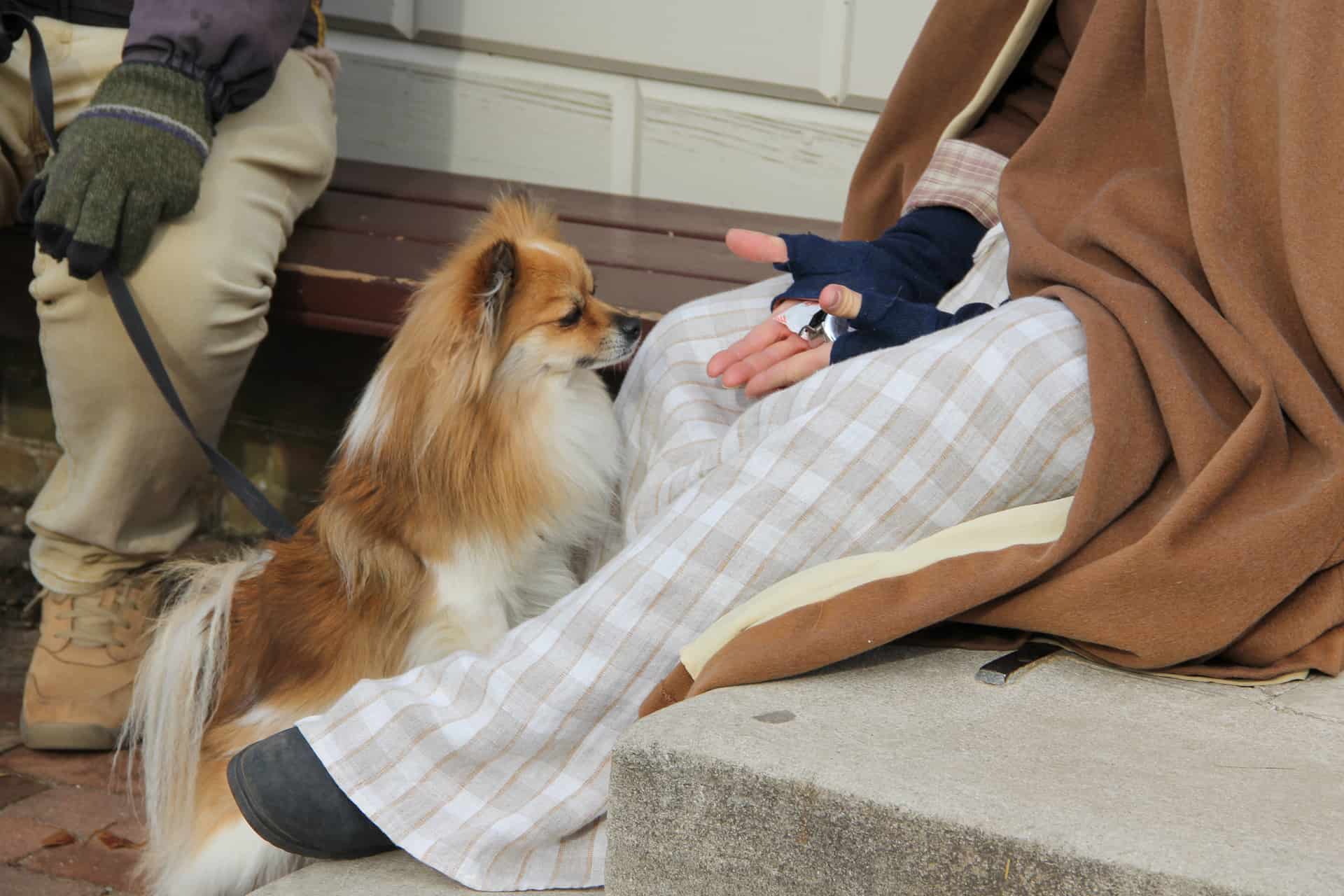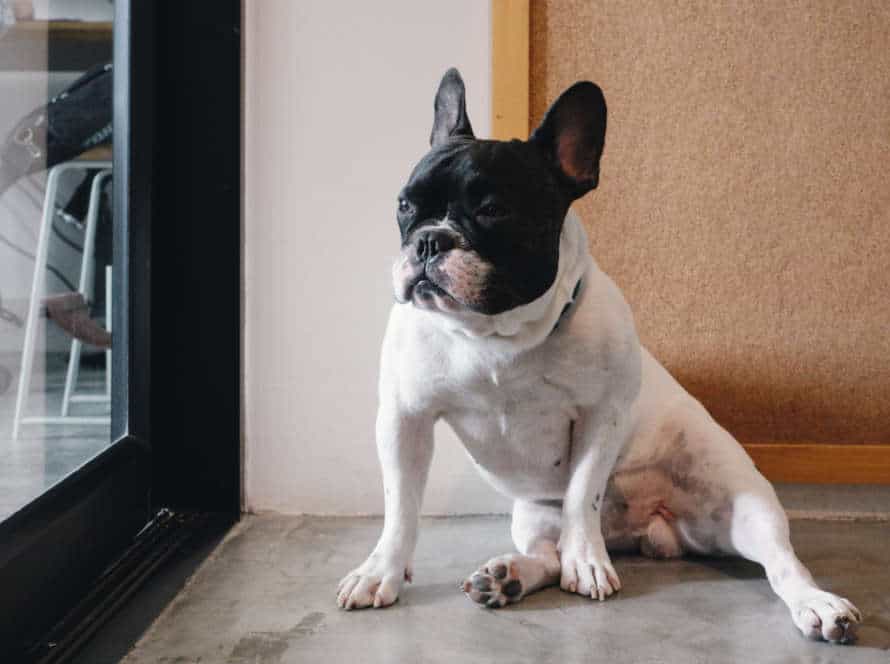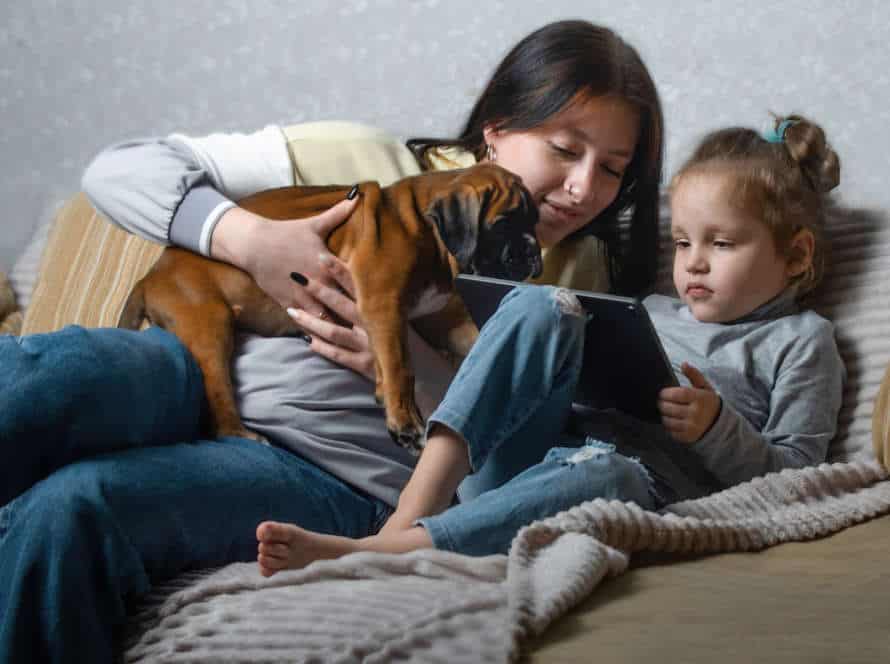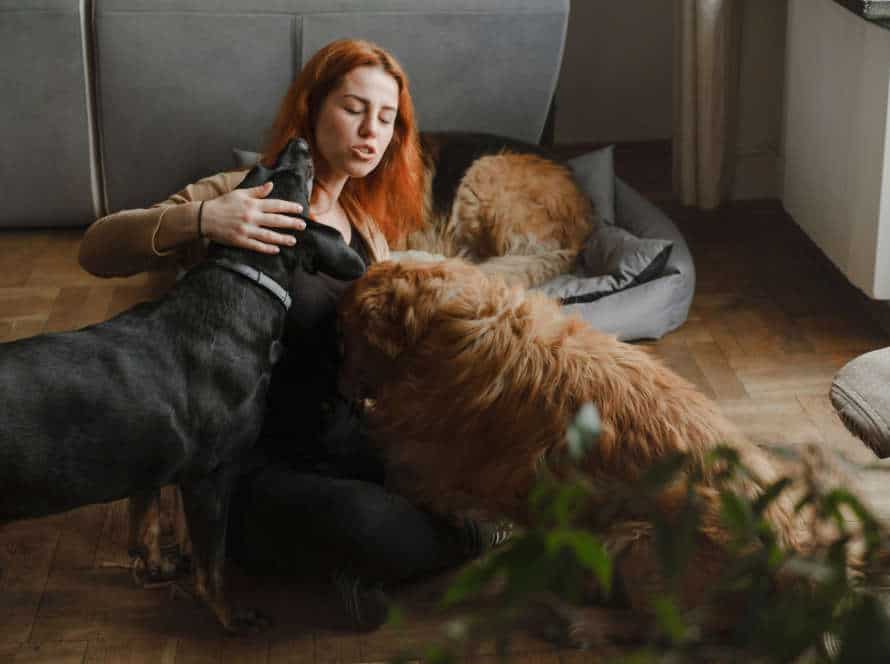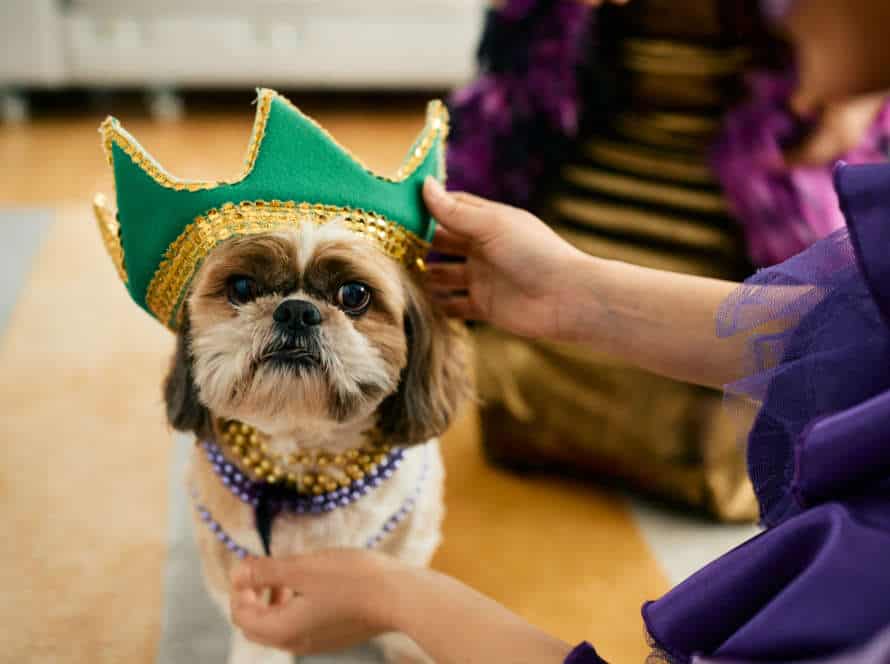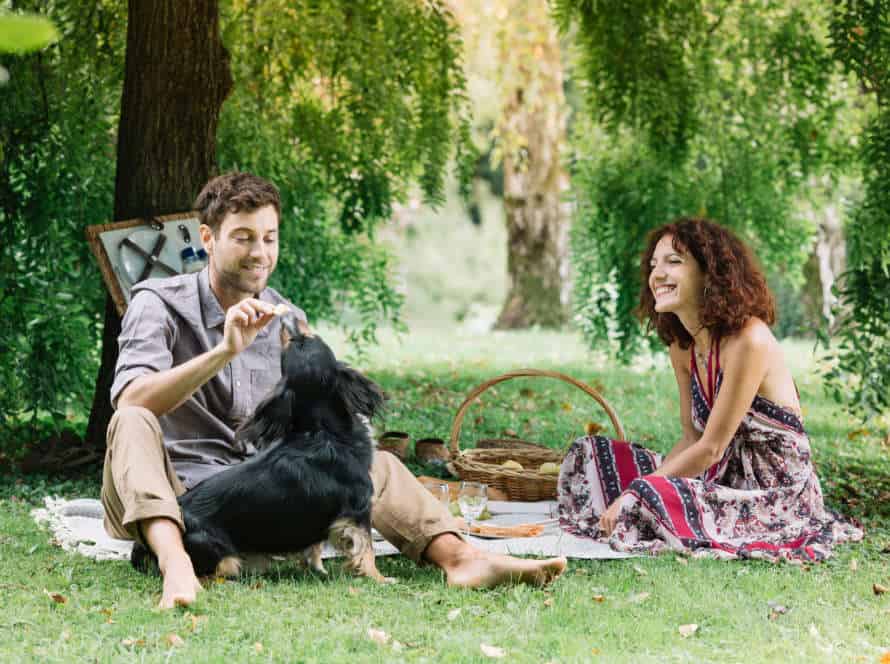Broadening Your Dog’s Horizons: Introducing New Experiences
Introducing new things is great for broadening your pup’s horizons! Here are some tips to get you going:
- Start mild. Introduce new experiences gradually – like take your doggo to a quiet park or pet-friendly store before a hectic festival or concert.
- Reward with positivity! Praise, treats, and toys – use them when your pup successfully navigates a new experience.
- Be patient – some dogs may need more time to adjust than others. Give your pup time to explore and feel comfortable.
- Think pup personality – how adventurous is your pup? Take that into account when introducing new stuff!
- And most importantly, have fun and enjoy the experience with your furry buddy!
Understanding your Dog’s Personality
It’s crucial to comprehend your pup’s personality before introducing them to new experiences, especially if they could be stressful. Each dog has their own unique character. By understanding them, their necessities and how they act in various scenarios, you can guarantee the fresh experiences you give them are favorable. Knowing your pup’s personality will aid you to recognize how they’ll react to a new situation and how to best ready them for it. Let’s see how to grasp your dog’s personality.
Assessing your dog’s comfort level with new experiences
Assessing your pooch’s ease with novel experiences is key to broadening their horizons. Each dog has their own personality and temperament, so their comfort level may vary.
Here are some tips to assess their comfort level with new experiences:
- Keep an eye on their body language and behavior in new situations.
- Begin with small exposures.
- Notice their response to new experiences and adjust accordingly.
- Don’t push them if they seem stressed or anxious.
- Reward them for positive behavior and tranquility in new situations.
By understanding your dog’s personality and taking time to assess their comfort with new experiences, you can help them feel comfortable and sure in a variety of scenarios.
Determining your dog’s socialization level
Assessing your pup’s socialization level is key for expanding their boundaries and introducing them to new experiences that will shape their personality. Here are some ways to find out:
- Observe how they behave around unfamiliar people and dogs.
- Consider their responses to new situations and changes in their environment.
- Introduce new stuff to them bit by bit and watch how they react.
- Take them to training classes or socialization events to interact with other animals, people and new places.
By getting a better grasp of their socialization level, you can properly expose them to novel experiences and help form their character. Remember that every doggo is special, so have patience and be consistent in your approach.
Identifying potential fears or phobias
Understanding your pup’s personality means finding potential fears or phobias they may have. Here are some signs that can tell you if your pup is scared:
- Pacing or trembling
- A lot of barking or whining
- Hiding or cowering
- Tail between the legs
- Destructive behaviour
- Heavy panting or drooling
- Trying to escape
It’s important to know what’s causing your pooch’s fear so you can help them. Introduce new experiences slowly, with treats, praise and toys to make it positive. With gradual exposure, your pup can overcome their fears and learn to be brave.
Pro Tip: Always be patient and calm when you want your pup to try new things.
Positive Reinforcement Training
Positive reinforcement training is the most human and effective way to introduce your pup to new stuff. This training relies on rewarding wanted behaviors with positive reinforcement. This could be treats, compliments, or love when they do what you want or respond positively to something different. Eventually, this will help your dog become comfortable and sure when presented with new experiences.
Basic commands and leash training
Basic commands and leash training are essential for positive reinforcement training. This helps your pup get used to new experiences. Choose a comfy collar/harness and leash that fits your dog’s size. Then, do the following steps:
- Let your dog smell and become familiar with the new equipment.
- Start short walks, use treats or praise to reward good behavior.
- Train your pet basic commands like ‘sit’, ‘stay’, and ‘heel’ during walks.
- Introduce your pup to different terrains and environments. Make sure to use basic commands and leash training for safety and comfort.
- Be patient and consistent. Celebrate successes, and work through any challenges with positivity.
Gradual exposure to new stimuli
Positive reinforcement training uses gradual exposure to new stimuli. This helps your dog explore, without stress. Here’s how to do it:
- Identify the new experience you want to give your dog.
- Start with a mild version of it.
- For example, if you want to expose your pup to traffic noise, begin with low-volume traffic recordings.
- Give treats and praise as rewards when your dog stays calm and relaxed around the new stimuli.
- Gradually increase the intensity of the experience, continuing to reward good behavior.
- Finally, your pup will be able to handle the full intensity of the new experience without fear or anxiety.
Integrating positive reinforcement training techniques
Positive reinforcement training is key when introducing your pup to new things. It helps them feel secure. Here are some tips:
Enrichment Toys: Toys that make them work for a reward build confidence and ease anxiety. Examples: puzzle feeders, Kong toys or treat balls.
Clicker Training: This uses a clicker to mark desired behavior, usually followed by a treat. This helps the pooch understand which behavior is rewarded.
Desensitization: Gradually introducing previously stressful scenarios reduces fear and anxiety. Start low and work up.
Positive reinforcement training creates a safe and enjoyable atmosphere. This allows your dog to develop self-assurance and enjoy special times with you.
Outdoor Exploration
Introduce your dog to new activities outside!
Take your pup on hikes, to the beach, or anywhere outdoors. It’s a fun way to enjoy nature together. Outdoor exploration can also help socialize your pet, teach them new smells and sounds, give them freedom, and build muscles. Let’s look at the advantages of outdoor exploration for your pup.
Organizing a safe and stimulating outdoor environment
Creating an outdoor space that is secure and fun for your pup is key to their health and happiness. Enhancing their life with new experiences can help broaden their horizons. Here are some tips to make it happen:
- Make sure the space is safe and free of any hazards.
- Provide them with shade, water and a comfy place to rest.
- Vary the textures and surfaces they explore, like grass, gravel, wood chips.
- Introduce new smells and sounds to keep them interested.
- Teach them commands like “come,” “stay” and “leave it” for extra safety.
- Always watch over them and reward good behavior.
Dog-friendly places to visit
Bringing your pup on an adventure can be a fun way to bond and make memories. Here are a few places you can take them:
- Dog-friendly hiking trails: Check if your local trails allow dogs.
- Beaches: Look for dog-friendly beaches near you.
- Dog parks: Socialize your pet and give them time to run and play off-leash.
- Outdoor markets: Some markets permit leashed dogs.
- Restaurants and cafes: Numerous restaurants and cafes have outdoor seating for you and your pup.
Remember to bring water and poop bags. Plus, always follow the guidelines of each place for a safe and enjoyable experience.
Basic safety guidelines for exploring new environments
Exploring new places with your pup can be thrilling. But, for a safe and fun time, follow these safety guidelines!
- Check out the new area and note any potential dangers.
- Keep your doggo on a leash and make sure they have proper ID tags.
- Ease into new sounds, smells, and surroundings based on your pup’s behavior and comfort level.
- Pack food and water to keep your pup hydrated.
- Bring a first aid kit and watch out for signs of heat exhaustion or dehydration in dogs.
Indoor Stimuli
Outdoors activities are great for your pup. But, they can also enjoy new experiences without going out! Introduce them to indoor stimuli. This exposes your dog to new and exciting sights, smells and tastes. Let’s discuss the various types of indoor stimuli you can offer your furry friend.
Brain games and interactive toys for dogs
Brain games and interactive toys are great for your pup! They keep ’em mentally stimulated, engaged, and entertained. Here’re some ideas:
- Puzzle toys with food and treats to challenge your pup.
- Hide-and-seek games with their toys or treats.
- Tug-of-war toys for an interactive and fun bonding experience.
- Interactive fetch toys that bounce and dispense snacks.
Pro tip: Rotate these games and toys every few weeks for something new.
Positive reinforcement training through play
Positive reinforcement training, through play, is an effective way to teach your pup new behaviors. Expand their world by introducing them to new experiences within your home. Here are some tips:
- Choose an activity your dog loves, like playing with a ball or tug toy.
- Use treats or verbal praise to reinforce wanted actions, such as sitting or dropping the toy on command.
- Introduce new stimuli gradually. For example, new toys or sounds. Use positive reinforcement to build your dog’s confidence.
- Be patient and consistent. Keep the play sessions short and enjoyable, so your pup doesn’t become bored or overwhelmed.
Pro Tip: Always keep a positive attitude while training your furry pal. This will help them learn and stay engaged.
Indoor activities to strengthen the bond with your dog
Make the most out of rainy days! Indoor activities with your pup can help strengthen your bond. Plus, it provides mental and physical stimulation. Try introducing your pup to new experiences and stimuli so they can broaden their horizons and feel less anxious in new situations.
Here are some fun activities to try:
- Hide and Seek – Hide treats or toys around the house and let your pup find them.
- Obstacle Course – Create an indoor obstacle course with chairs or pillows.
- Teach New Tricks – Balance a treat on your pup’s nose or teach them how to “play dead”.
- Puzzle Toys – Offer interactive puzzle toys or a Kong filled with peanut butter or a snuffle mat.
These activities will keep your pup healthy and happy, both mentally and physically!
Socialization
Socialization is key for your pet’s life. It helps them get used to people, animals, and new environments. Giving your dog new experiences is valuable – it helps them learn and develop.
Here, let’s look at why socializing is important and how to introduce new things to your pup.
The importance of regular socialization
Socializing your dog is essential for their mental and emotional health. Show them new places and experiences to open their minds. Here are the benefits:
- Less anxiety: Socialization can help ease their anxiety and make them feel more comfortable in different atmospheres.
- Better manners: They can learn how to act around other dogs and people.
- Healthier overall: Stress and anxiety levels will be lower, leading to better health.
To socialize your pup, introduce them to things bit by bit and give rewards for good behavior. A socialized dog is a happy, healthy one.
How to introduce your dog to new individuals
Introducing your pup to new faces can be tricky. Here are some tips to help:
- Start by introducing one person in a familiar spot, like your home or yard.
- Let your pup come to them without pushing.
- Reward them with treats and kind words when they act good.
- When they are comfy with one person, slowly introduce more people and places.
- Watch them carefully. If they become anxious or mad, take them away.
Remember, socializing your dog is important for their health and can stop bad behavior later.
Socialization rules and safety guidelines for dogs
Socializing your pup is crucial for their growth. Here are some tips to follow when introducing them to new things:
- Start Early – Do it before 12 weeks old.
- Positive Reinforcement – Use treats and praise for better behavior.
- Gradual Exposure – Begin with low-stress places and build up.
- Monitor Body Language – Look out for signs of stress, eg. trembling, panting, avoidance.
- Safety First – Always keep your dog on a leash.
- Be Consistent – Practice socializing regularly.
- Pro Tip – Remember that socializing is an ongoing process. Continue to expose them to new experiences for a healthy life.
Frequently Asked Questions
Q: Is it important to introduce my dog to new experiences?
A: Yes, introducing your dog to new experiences can help build their confidence, reduce anxiety, and prevent boredom.
Q: How do I introduce new experiences to my dog?
A: Start with small and gradual steps, ensuring your dog feels comfortable and safe. Use positive reinforcement, such as treats or praise, to encourage your dog.
Q: What new experiences should I introduce to my dog?
A: This will depend on your dog’s temperament and interests. Some ideas include visiting new places, meeting other dogs, trying new toys or games, and learning new commands or tricks.
Q: What if my dog doesn’t seem interested in new experiences?
A: Keep trying and be patient. Some dogs may take longer to adjust to new experiences. Also, consider consulting with a professional dog trainer or behaviorist for guidance.
Q: Can introducing my dog to new experiences be dangerous?
A: As with anything new, there is always some level of risk. However, if you take the necessary precautions and introduce new experiences slowly, the risk can be minimized.
Q: How often should I introduce new experiences to my dog?
A: This will depend on your dog’s personality and preferences, but it’s generally recommended to introduce new experiences periodically to prevent boredom and promote mental stimulation.

